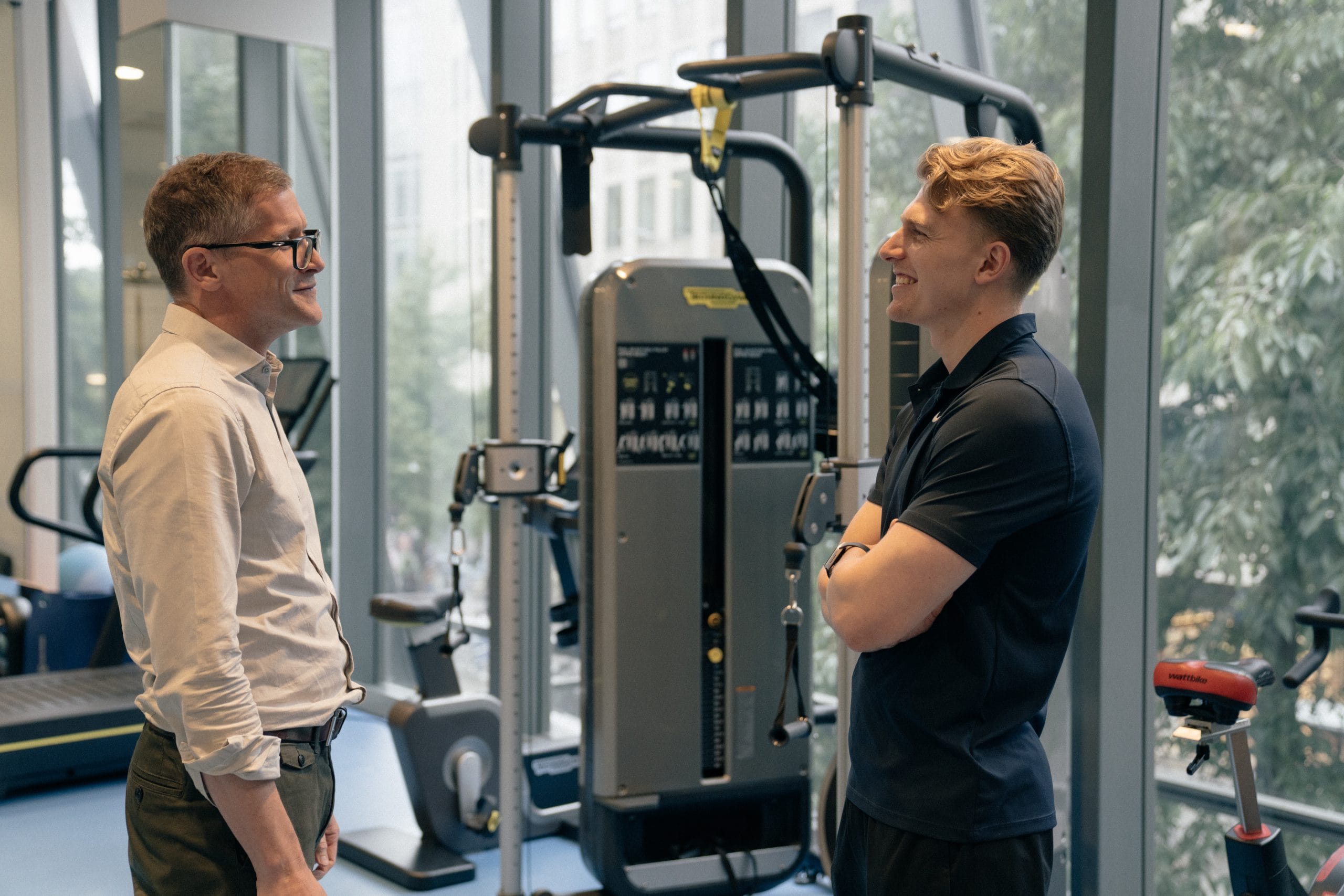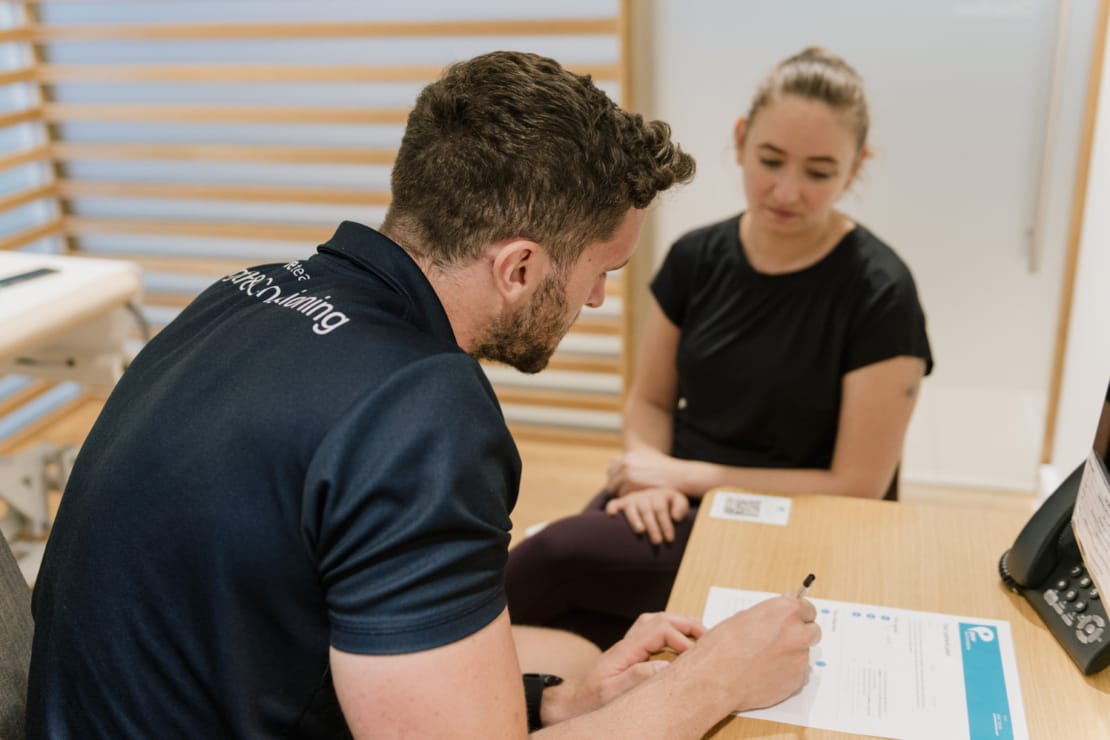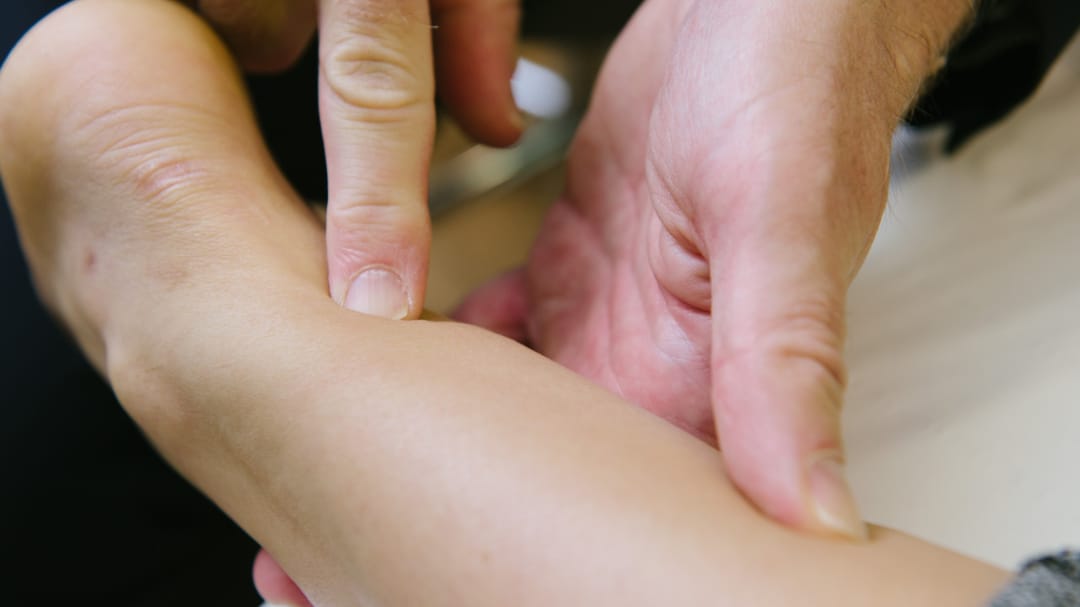Lower Back Pain: Causes, Symptoms & How To Treat It

Pure Sports Medicine
- 18 October, 2018
- Back Pain
- Pain Management
- 6 min read
This article contains the following contents:

- Overview of lower back pain
- Anatomy of the spine
- Causes and Associated Symptoms of lower back pain
- Diagnostic Investigations for lower back pain
- Management of lower back pain
- Practical exercises for lower back pain (videos)
Overview
Lower back pain (LBP) is the number one cause of disability globally. Lower back pain is a symptom, not a disease. It can have many causes like other symptoms, such as headaches or dizziness.
Some of these can be known or unknown abnormalities or diseases. It can affect the quality of life of children, the elderly, sedentary office workers and elite athletes.
LBP is a multifactorial condition, incorporating biological (muscle spasm, inflammation, etc), psychological (anxiety, depression, etc) and social factors (work stress, quality of life, etc). They all interact to create the symptom of LBP.
These factors mean that everybody’s lower back pain is different and each patient should be treated in an individual way. In some cases, a specific cause of lower back pain is difficult to identify and is termed non-specific for this reason. Lower back pain normally improves substantially after 6 weeks but pain at 3 or 12 months is reported by two-thirds of people with lower back pain.
Research shows that around a third of people may have a recurrence of lower back pain within a year of recovering from a previous episode.
Anatomy of The Spine
The spine is an inherently strong and flexible structure made up of bones, ligaments, muscles, nerves and joints. There are 24 individual vertebrae sitting on top of the sacrum and coccyx. The bottom 5 vertebrae form your lower back or lumbar spine.
Each vertebrae are connected by facet joints and an intervertebral disc sits in between them. The vertebrae and discs of the lower back are much larger than the neck. The spinal cord threads through the spine and eventually fans out through the lower back. This called the cauda equina.
In a space between each of the two vertebrae a nerve root comes from the spinal cord and forms a nerve. The nerve roots of the lower back feed the nerves of the pelvis and legs. The main nerve formed is the sciatic nerve.
Causes and Associated Symptoms of Lower Back Pain
Acute lower back pain can be triggered by physical and/or psychosocial factors. However, a third of patients cannot remember a specific trigger. People with conditions such as diabetes, asthma and headaches are more likely to report lower back pain.
This is also true of people who may be struggling with their mental health. It is not always possible to identify one specific cause of lower back pain and usually, several elements interact and result in an individual feeling pain in their low back. Research has found that the severity of pain does not always correlate with the level of tissue damage or the time of recovery.
A great deal of very nasty, sudden onset low back pain settles very quickly with the right advice and management. Some patients will present with leg pain, usually caused by some inflammation around the nerve root. The commonly used term for this is sciatica. Generally, these symptoms include leg pain that is worse than back pain and worsening pain with coughing or sneezing. In some cases, this can co-exist with weakness, loss of sensation or changes in reflexes which are called radiculopathy.
Disc bulges and inflammation are one very common cause of this but the physical signs on the scan rarely explain the whole picture. We know disc bulges are common in people with no pain and we also know that in people with pain, that the bulge can resolve, but pain may remain.. In extreme cases, the nerves at the bottom of your spinal cord may be compressed. This is called cauda equina syndrome.
If you experience any of the following, please seek urgent medical attention:
- Loss of feeling /pins and needles between your inner thighs or genitals
- Numbness in or around you back passage or buttocks
- Altered feeling when using toilet paper
- Increasing difficulty when you try to urinate
- Increasing difficulty when you try to stop or control your flow of urine
- Leaking urine or recent need to use pads
- Not knowing when your bladder is either full or empty
- Inability to stop bowel movement or leaking
- Loss of sensation when you pass a bowel motion
- Change in ability to achieve an erection or ejaculate
- Loss of sensation in genitals during sexual intercourse
There are some rare conditions that are a cause of lower back pain, which should be thought about with every person with lower back pain. These include cancer, fractures, infections or inflammatory disorders. Some additional symptoms (or red flags) to look out for with these conditions are:
- Poor general health
- Increased fatigue
- Unexplained weight loss
- Night sweating
- Loss of coordination
- Constant night pain worse than the day
- Pain, redness, heat or swelling in other joints
- Morning back stiffness lasting more than 90 minutes.
Up to 80% of people with lower back pain will have one red flag despite less than 1% having one of those serious disorders. However, it is important to discuss any symptoms with a healthcare professional.
Diagnostic Investigations for Lower Back Pain
Healthcare professionals can clinically diagnose lower back pain based on symptoms and clinical tests. The majority of people will have effective treatment based on these findings and further diagnostic imaging is not needed. The UK National Institute for Health and Care Excellence (NICE) and the American College of Physicians suggest routine imaging such as X-ray and MRI should not be performed as a first step in the majority of lower back pain cases including sciatica. If the clinician has concerns that a patient has symptoms associated with one of the serious but rare low back condition, scans will be ordered, or in cases where a patient has failed to respond effectively to conservative, evidence-based treatment consisting of manual therapy, exercise and education.
As we age, changes to the condition of the spine are common. In a study done on people without back pain, numerous changes to the spine were found on an MRI scan. These included disc degeneration, disc bulges and facet joint degeneration. We use the term degeneration to describe these normal age-related changes, but it’s not a great term as it suggests the spine may be less strong but this is not the case at all.
Many of them relate to the loss of water from the tissues of our body as we age but the strength and stability of our spine is maintained. The prevalence of these conditions increases as we get older, like wrinkles on the face. LBP is normally a result of a number of structures interacting and an abnormality on a scan is not always the main culprit. MRI scans often discover incidental findings that are not related to the pain. Clinicians use the results of any scan to confirm their diagnosis and link this with their clinical findings to understand the pain presentation of the individual patient.
Management of Lower Back Pain
Management of lower back pain will vary from patient to patient depending on the individual case. The multidisciplinary team (MDT) approach should be used including a sport doctor, physiotherapist, osteopath, chiropractor, soft tissue therapist, strength and conditioning coach and Pilates instructor. Not every patient will need to see each one but every professional can offer high-quality care within their scope of practice.
The main components of lower back pain rehabilitation consist of:
- Education – It is evident from the information above that low back pain can be a complex problem with many elements contributing to why someone develops pain or has persistent pain. It is essential that people see health professionals who understand and discuss the factors involved in each specific individual’s presentation and who don’t just rely on the results of a scan. Education should include a comprehensive management plan so each patient knows how they are going to achieve their goals and what they need to do to help with this. Health professionals will advise on activity levels to promote the fastest and greatest outcomes and answer any questions to help people manage their pain in-between sessions.
- Heat – using heat (hot bath, wheat bag or hot water bottle) on the lower back can give short-term pain relief and help relax tight muscles.
- Medication – Non-steroidal anti-inflammatory drugs (NSAID) such as ibuprofen can help relieve back pain. Many types are available to buy from supermarkets or pharmacies without a prescription. NSAIDs aren’t suitable for everyone so please check with a pharmacist or GP for advice. Other medications are available such as codeine, but this should only be used for a short time. Paracetamol on its own is not recommended by NICE but can be used with codeine if advised by a doctor. If pain persists, the research shows that drugs like ibuprofen and codeine are ineffective and should not be used. Different medications for persistent pain can be prescribed by a doctor.
- Manual and soft tissue therapy – physiotherapists, osteopaths, and soft tissue therapists can perform hands-on treatment designed to reduce pain and facilitate movement following injury. The treatments may include mobilisations, manipulation and massage. This treatment in conjunction with exercise has been found to elicit the best response to recovery.
- Exercise and Pilates – Practitioners can prescribe exercises to help facilitate a return to normal activities. Exercises can be used to progressively return to normal day to day movements, improve flexibility and strengthen muscles. They can also advise when to return to your normal exercise routine. In conjunction with a strength and conditioning coach and Pilates instructor, a prevention program can be designed to avoid recurrence of lower back pain and promote a healthy lifestyle.
- Psychological Support – due to the multifactorial nature of lower back pain, some patients may find speaking to a therapist beneficial. Cognitive behavioural therapy (CBT) has been shown to be effective alongside the treatments above.
- Surgery – in the majority of patients surgery is not indicated. Research has shown that there is minimal difference between long-term outcomes of conservative management and surgery in lower back pain patients. Surgery may be indicated in patients with radiculopathy if their symptoms are worsening or haven’t responded to the treatments above.
Lower back pain is a complex condition that requires it to be managed individually for every patient. This is best achieved using an MDT approach to encompass every aspect of the patient’s pain and facilitate a successful recovery. If you would like to book an appointment with a physiotherapist please follow the link or call the relevant clinic.

Advice
Over the last 20+ years our experts have helped more than 100,000 patients, but we don’t stop there. We also like to share our knowledge and insight to help people lead healthier lives, and here you will find our extensive library of advice on a variety of topics to help you do the same.
OUR ADVICE HUBS See all Advice Hubs

